The Cornell Lab Bird Academy › Discussion Groups › Nature Journaling and Field Sketching › Drawing What You See – Upside Down Drawing
-
This was much harder than it looked! It took me a very long time and I think I may have used up most of my eraser… I found getting the perspective correct difficult, and took forever drawing the wing.

-
I know what you mean about the eraser. Maybe next lesson I won't need to erase as much....but I doubt it.
-
-
 Like the previous contribution I found this exercise to be very useful, but to begin with, I was mildly irritated. However, once I worked out that something useful was coming out of it was able to continue and sooner than I imagined this was the result. It might even be my best bird yet!
Like the previous contribution I found this exercise to be very useful, but to begin with, I was mildly irritated. However, once I worked out that something useful was coming out of it was able to continue and sooner than I imagined this was the result. It might even be my best bird yet! -
well this was quite a test for my patience. But I loved the exercise. I was able to focus just on the shapes more and more and even tho I got tired and felt like just giving up on the drawing I pulled through and got rewarded with a beautiful sparrow!

-
 Had great fun just disassembling this into shapes and drawing from there.
Had great fun just disassembling this into shapes and drawing from there. -
 Worked very intensely at relating all shapes and sizes. Needed the eraser quite a few times when I realized I has sketched a piece without reference to other parts for size and negative shapes. Had to slow down even more, and look for relationships and negative space to find where I should continue the drawing. Result is very satisfying. My brain was adapting to the process more and more as I advanced with the drawing.
A real training in looking for the true information for shapes to draw all contained in the relationships and space between the shapes. Thanks for this great exercise!
Worked very intensely at relating all shapes and sizes. Needed the eraser quite a few times when I realized I has sketched a piece without reference to other parts for size and negative shapes. Had to slow down even more, and look for relationships and negative space to find where I should continue the drawing. Result is very satisfying. My brain was adapting to the process more and more as I advanced with the drawing.
A real training in looking for the true information for shapes to draw all contained in the relationships and space between the shapes. Thanks for this great exercise! -
It was difficult and fun to see how the picture emerged. I’m also learning that I’m even more impatient than I thought. These lessons are forcing me to slow down and take my time. I could move even more slowly, but I am getting better at paying attention to lines and shapes. I think I still initially viewed the subject as an upside-down sparrow, but as I moved through the exercise, I focused on the shapes much more. When I did that, it was easier to keep moving along. I was counting lines and ovals and not thinking so much about trying to draw a bird.


-

-
Difficult but rewarding!

-
This will be a great help for things that I seem to have a mental block in drawing.
-
Woah!!! It was suuuuper difficult. My brain fought it the whole time- sometimes switching between seeing negative and positive space in the same place. But the end result was super surprising. Thank you for this!

-
Very helpful exercise to turn off what you THINK you see and focus on what you ACTUALLY see!

-


-
This upside-down drawing exercise was amazing. It very much improved the accuracy of my drawing, and I believe it will be an extremely useful skill in the field.

-
 Oh no, not a Carolina wren but a song sparrow. Oh dear. See how much I was concentrating on the shape!?
Oh no, not a Carolina wren but a song sparrow. Oh dear. See how much I was concentrating on the shape!? -
A fun and challenging exercise! I really took my time with it, used the proportions tool throughout, looked at negative space, erased when needed, and focused constantly on the relationships of the shapes and forms. I am happy with how it came out, both upside down and right-side up!


-
The upside-down drawing was difficult, and fun. It surprised me that it turned out so well.
-

-
April 19, 2023. A backhanded compliment coming up: Dear Liz - that was painful - but I have to hand it to you - now I feel like I can do absolutely anything. That exercise perfectly combined everything you demonstrated in this lesson and the previous one as well. Although I know the song sparrow, I found that because it was upside down and looking over its shoulder, all familiar landmarks were gone and I had to follow negative shapes, proportions, relative positions, contours. Wow.

-
awesome job!!!
-
WoW!!
-
-
 This was difficult exercise. It was difficult to see the relationships between the shapes as well as proportion. It seems that the brain really wants to fill in what the eyes see (or don't). I had to do a lot of erasing. I think this was an excellent exercise to really focus on shapes, negative spaces, etc. Thank you.
This was difficult exercise. It was difficult to see the relationships between the shapes as well as proportion. It seems that the brain really wants to fill in what the eyes see (or don't). I had to do a lot of erasing. I think this was an excellent exercise to really focus on shapes, negative spaces, etc. Thank you. -


-
magnificent I love how you used water colour
-
-
 This took a long time and was difficult, but really interesting. I'm left handed so I started from the right (the "bottom" of the branch). I did see the subject as a bird, but tried to stay focused on the individual shapes and draw them sequentially. Lots of erasing too...
This took a long time and was difficult, but really interesting. I'm left handed so I started from the right (the "bottom" of the branch). I did see the subject as a bird, but tried to stay focused on the individual shapes and draw them sequentially. Lots of erasing too... -
 An interesting exercise, but very difficult to bring in the proportion and scale in control. Need a lot of practice. Felt happy that I am able to draw the images even if they are not sharp, and accurate and need more refinement. Yes, I was trying to view the sparrow as what it was and then slowly realized to concentrate on the shapes, lines, and scale.
An interesting exercise, but very difficult to bring in the proportion and scale in control. Need a lot of practice. Felt happy that I am able to draw the images even if they are not sharp, and accurate and need more refinement. Yes, I was trying to view the sparrow as what it was and then slowly realized to concentrate on the shapes, lines, and scale. -
I felt the same way. Need to practice this technique a lot, but found the exercise very helpful.
-
-

-
 Kaia's Drawing
Kaia's Drawing -
 Kaia's Mom's Drawing
Kaia's Mom's Drawing
Read More:

 Like the previous contribution I found this exercise to be very useful, but to begin with, I was mildly irritated. However, once I worked out that something useful was coming out of it was able to continue and sooner than I imagined this was the result. It might even be my best bird yet!
Like the previous contribution I found this exercise to be very useful, but to begin with, I was mildly irritated. However, once I worked out that something useful was coming out of it was able to continue and sooner than I imagined this was the result. It might even be my best bird yet! 
 Had great fun just disassembling this into shapes and drawing from there.
Had great fun just disassembling this into shapes and drawing from there. 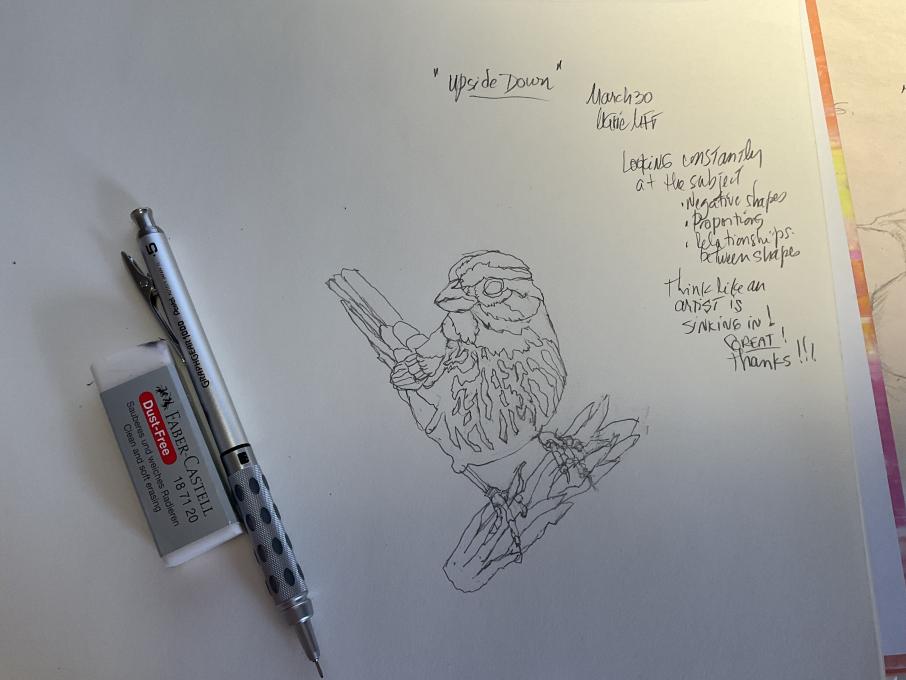 Worked very intensely at relating all shapes and sizes. Needed the eraser quite a few times when I realized I has sketched a piece without reference to other parts for size and negative shapes. Had to slow down even more, and look for relationships and negative space to find where I should continue the drawing. Result is very satisfying. My brain was adapting to the process more and more as I advanced with the drawing.
A real training in looking for the true information for shapes to draw all contained in the relationships and space between the shapes. Thanks for this great exercise!
Worked very intensely at relating all shapes and sizes. Needed the eraser quite a few times when I realized I has sketched a piece without reference to other parts for size and negative shapes. Had to slow down even more, and look for relationships and negative space to find where I should continue the drawing. Result is very satisfying. My brain was adapting to the process more and more as I advanced with the drawing.
A real training in looking for the true information for shapes to draw all contained in the relationships and space between the shapes. Thanks for this great exercise! 
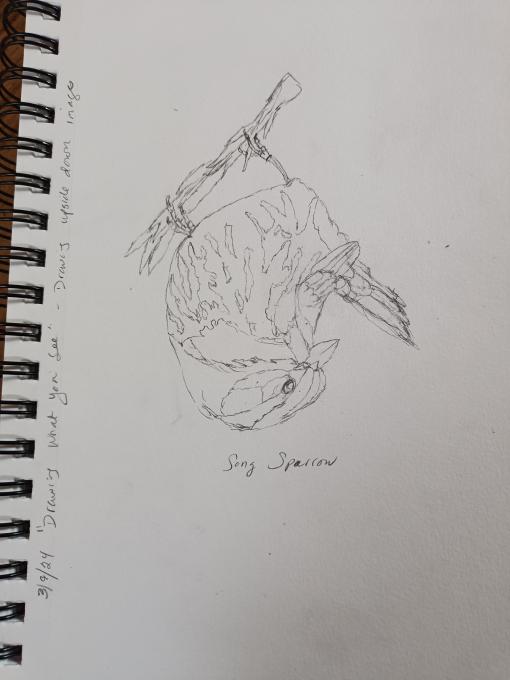
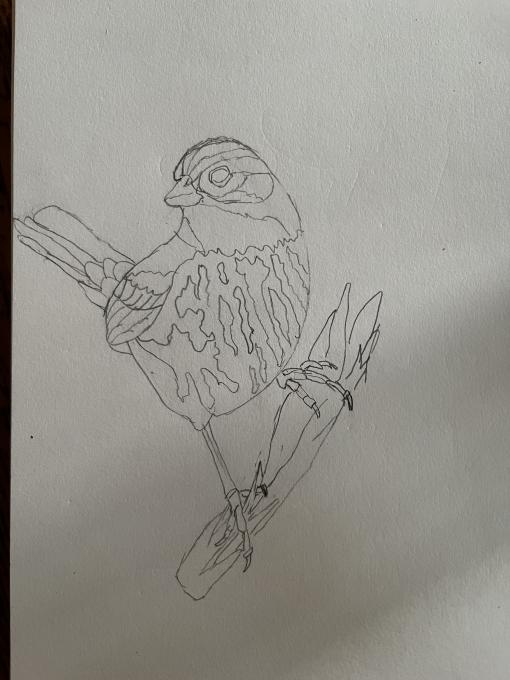
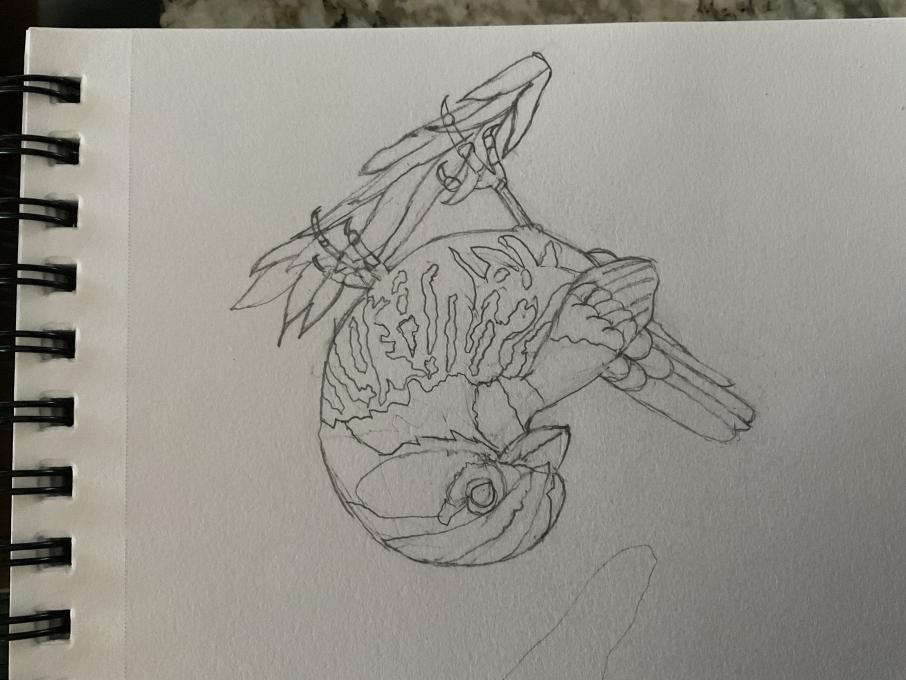
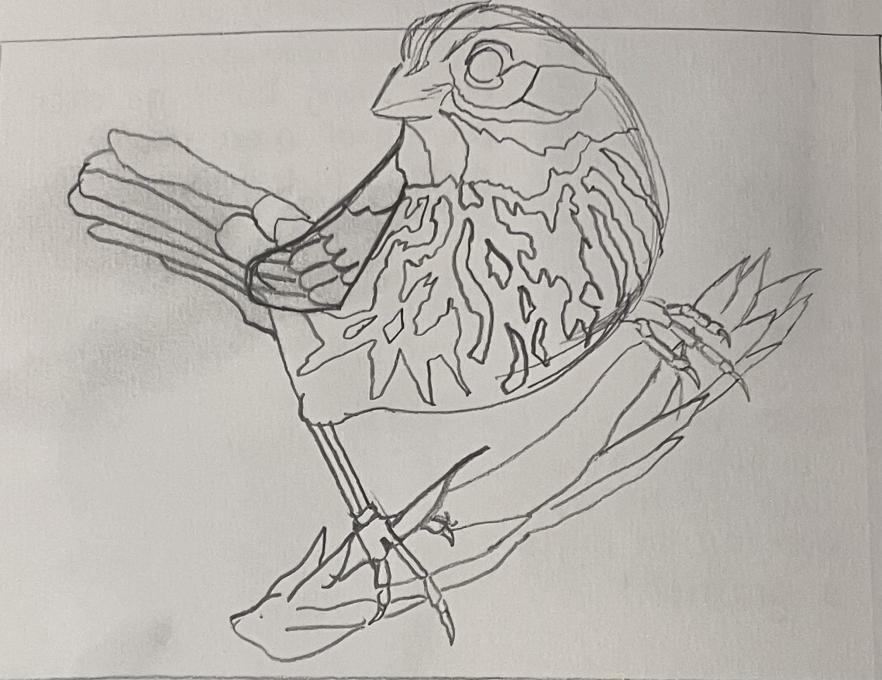

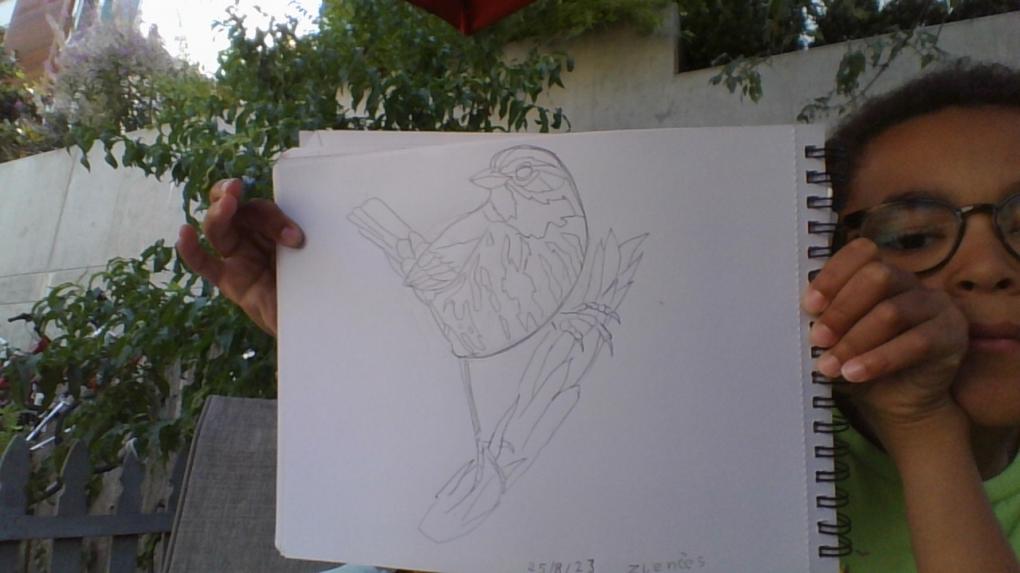
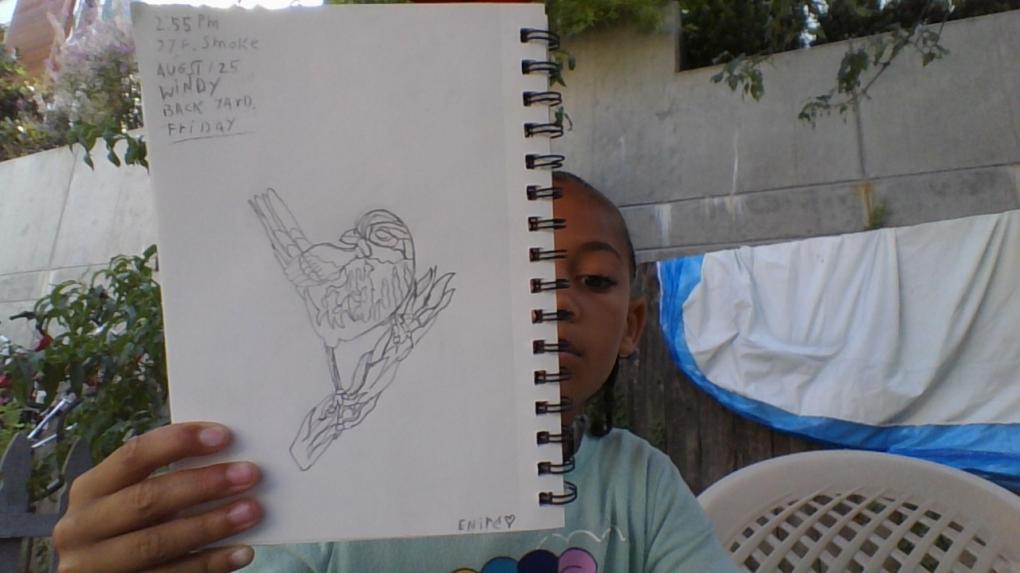
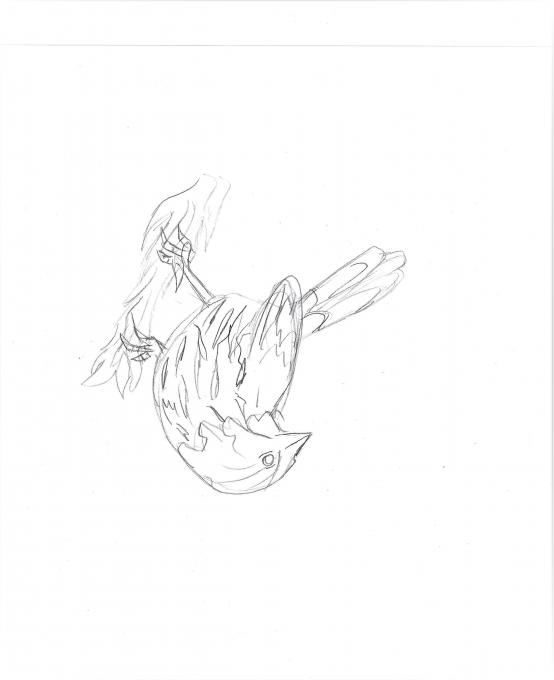
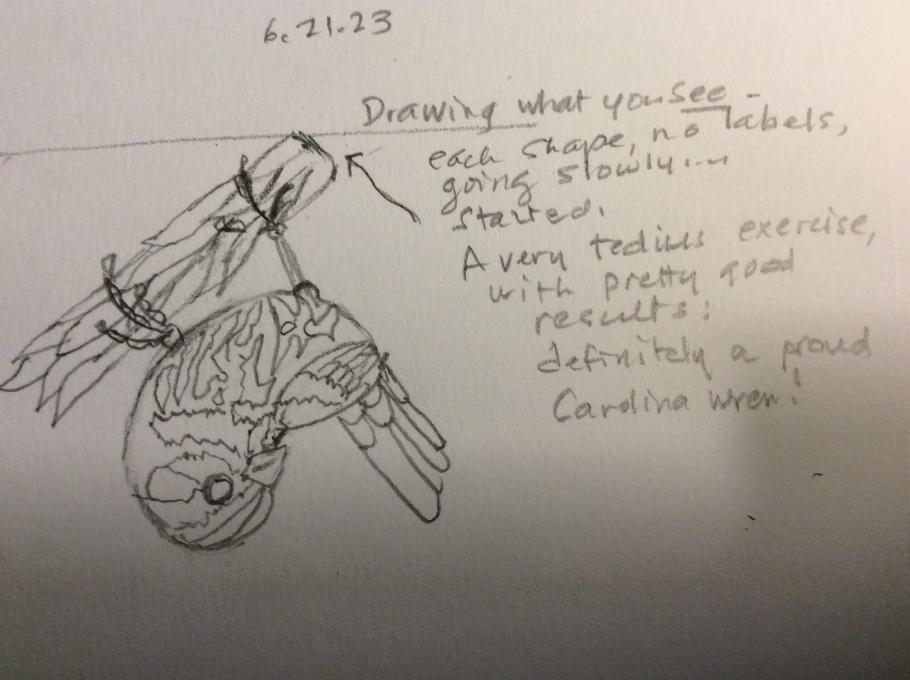 Oh no, not a Carolina wren but a song sparrow. Oh dear. See how much I was concentrating on the shape!?
Oh no, not a Carolina wren but a song sparrow. Oh dear. See how much I was concentrating on the shape!? 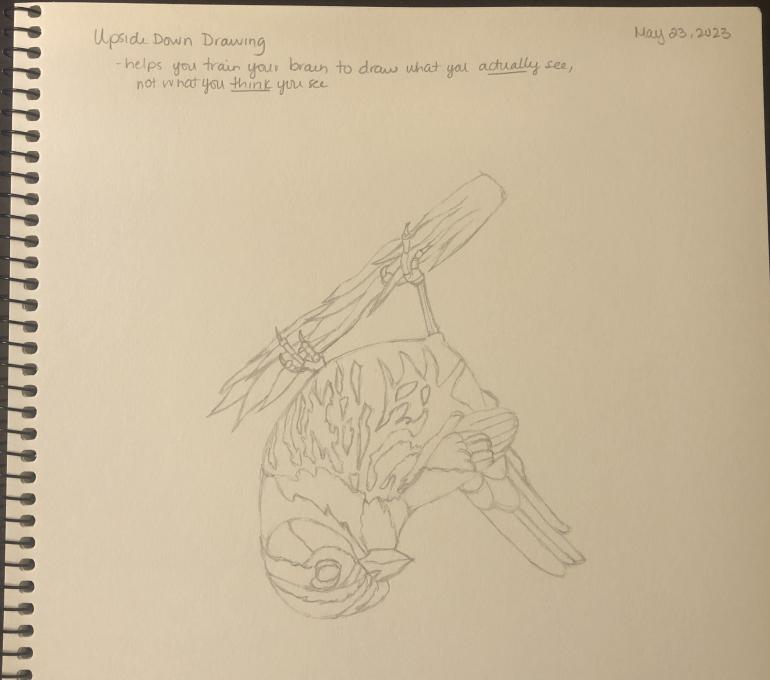
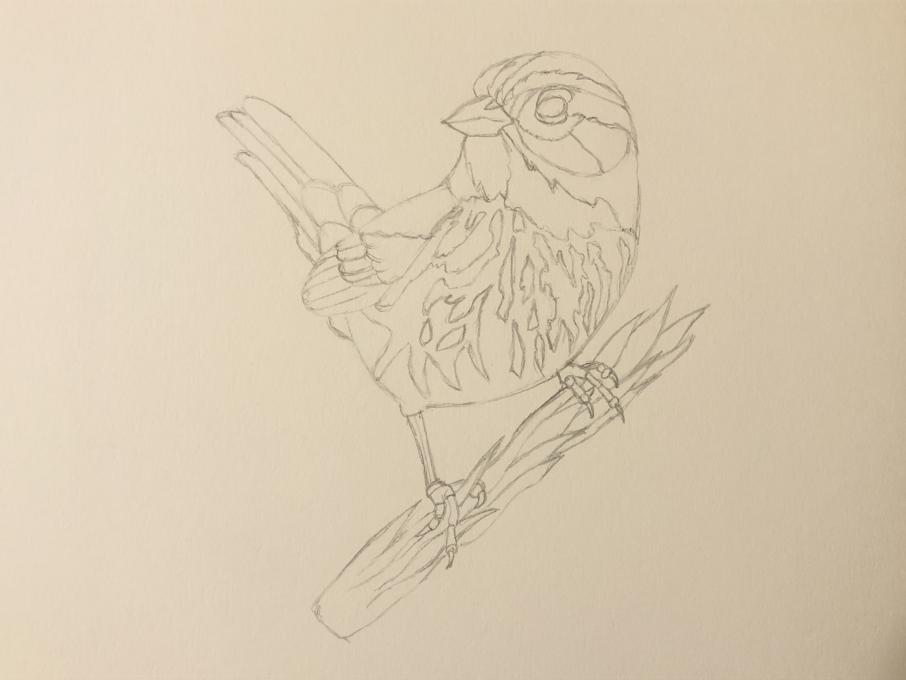
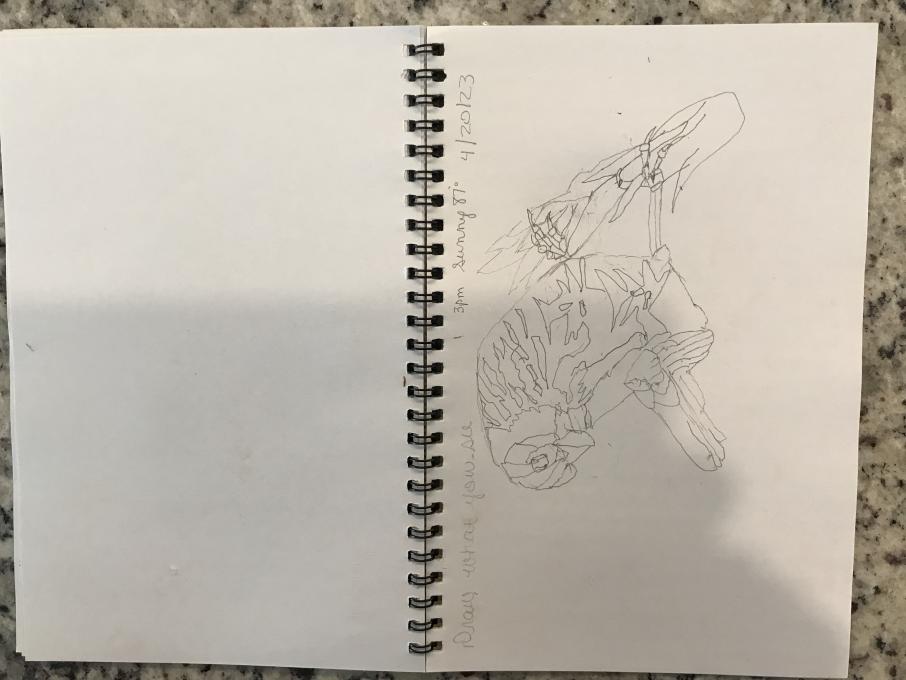
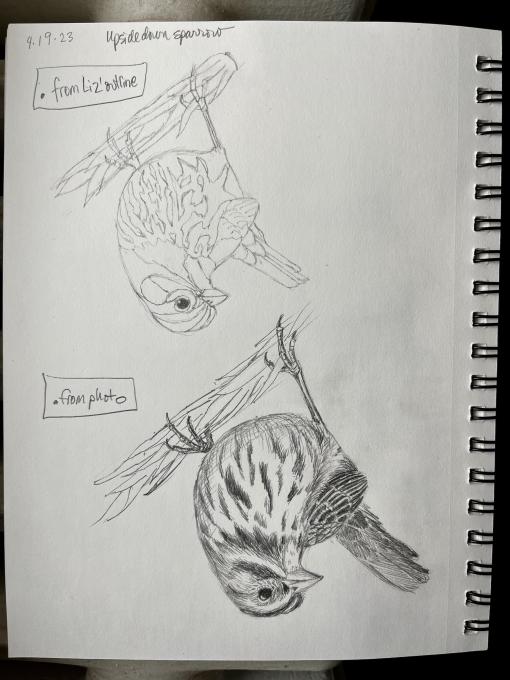
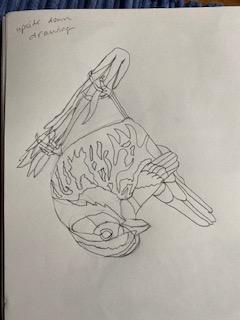 This was difficult exercise. It was difficult to see the relationships between the shapes as well as proportion. It seems that the brain really wants to fill in what the eyes see (or don't). I had to do a lot of erasing. I think this was an excellent exercise to really focus on shapes, negative spaces, etc. Thank you.
This was difficult exercise. It was difficult to see the relationships between the shapes as well as proportion. It seems that the brain really wants to fill in what the eyes see (or don't). I had to do a lot of erasing. I think this was an excellent exercise to really focus on shapes, negative spaces, etc. Thank you. 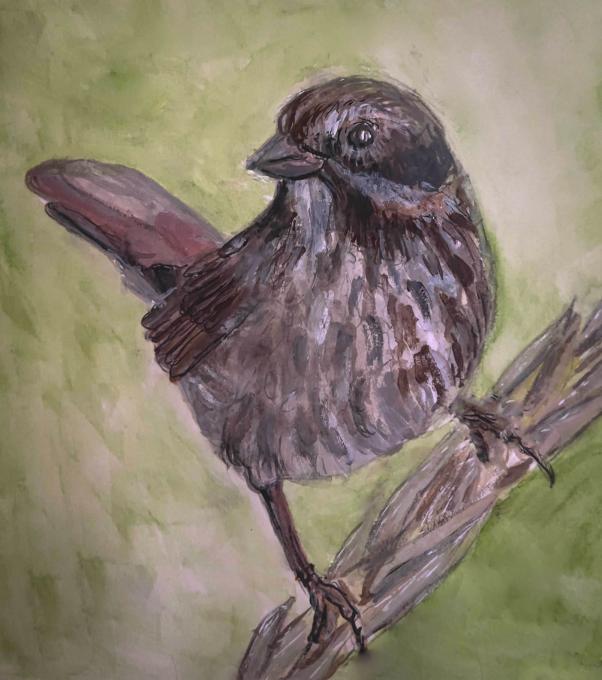
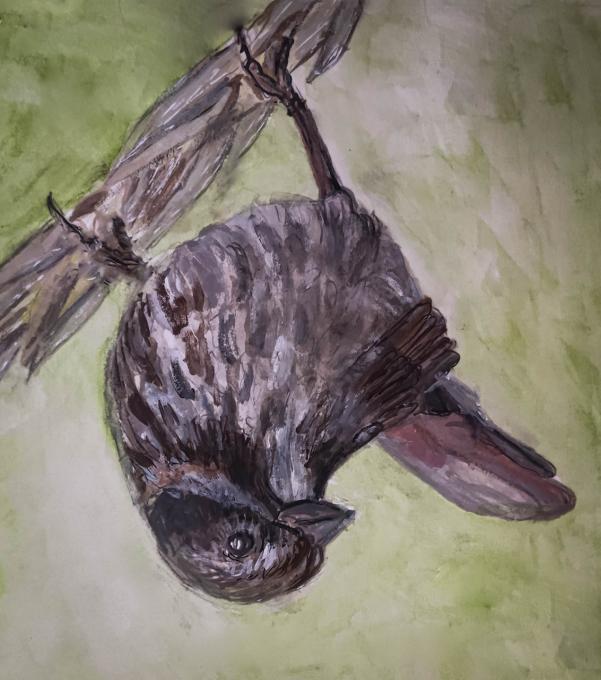
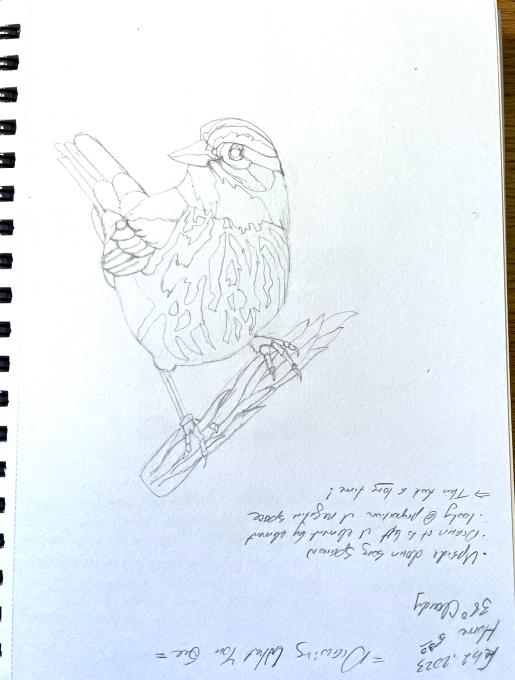 This took a long time and was difficult, but really interesting. I'm left handed so I started from the right (the "bottom" of the branch). I did see the subject as a bird, but tried to stay focused on the individual shapes and draw them sequentially. Lots of erasing too...
This took a long time and was difficult, but really interesting. I'm left handed so I started from the right (the "bottom" of the branch). I did see the subject as a bird, but tried to stay focused on the individual shapes and draw them sequentially. Lots of erasing too... 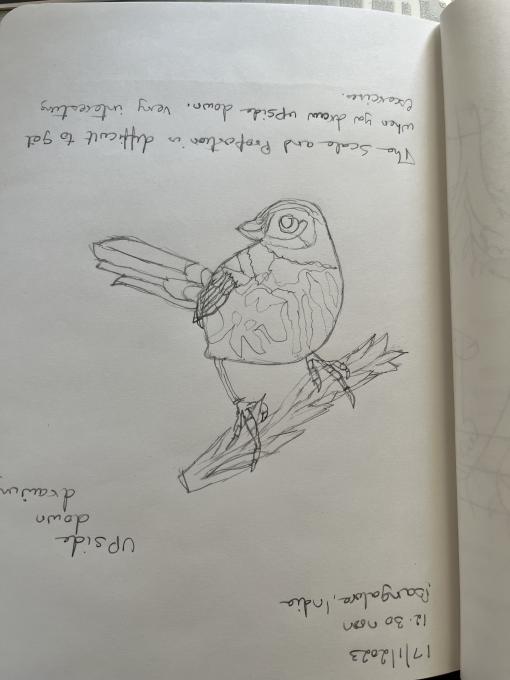 An interesting exercise, but very difficult to bring in the proportion and scale in control. Need a lot of practice. Felt happy that I am able to draw the images even if they are not sharp, and accurate and need more refinement. Yes, I was trying to view the sparrow as what it was and then slowly realized to concentrate on the shapes, lines, and scale.
An interesting exercise, but very difficult to bring in the proportion and scale in control. Need a lot of practice. Felt happy that I am able to draw the images even if they are not sharp, and accurate and need more refinement. Yes, I was trying to view the sparrow as what it was and then slowly realized to concentrate on the shapes, lines, and scale. 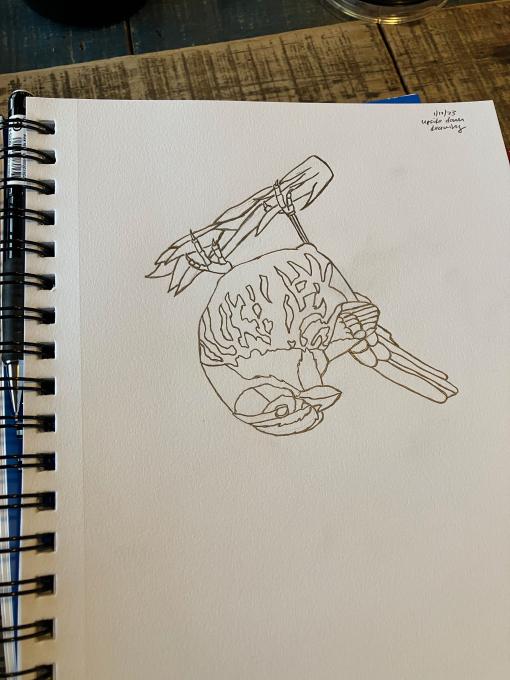
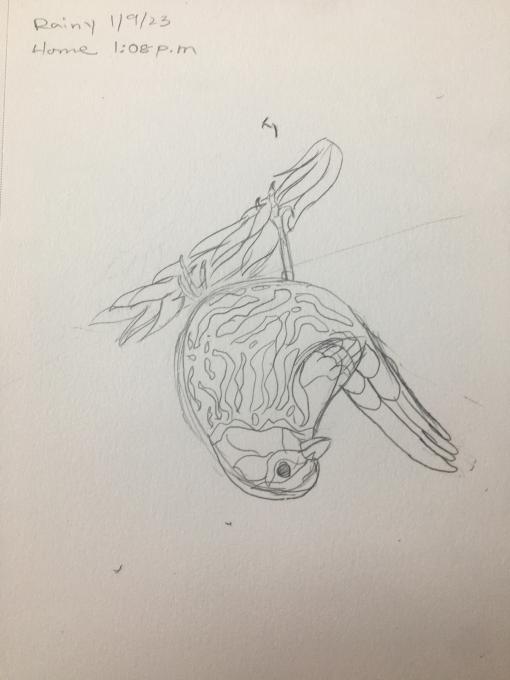 Kaia's Drawing
Kaia's Drawing 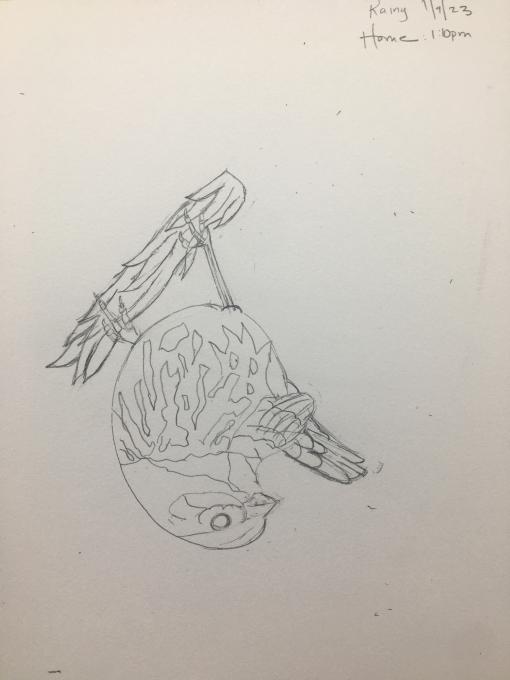 Kaia's Mom's Drawing
Kaia's Mom's Drawing